8 Ways to Use a Mictofibre Cloth for Cleaning
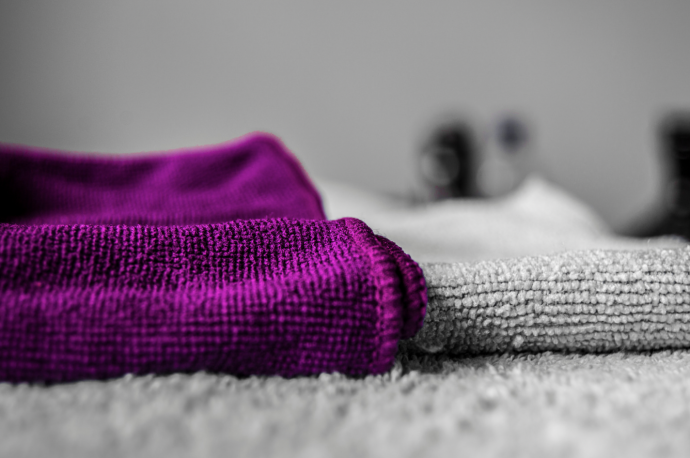
I use a lot of microfibre cloths; I love how easy they are to clean with. Microfibre is a blend of polyester and polyamide (nylon) and each fibre is up to 50 times finer than a human hair. Ideal for high powered cleaning, the fine hairs in a microfibre cloth pick up and trap more dirt than standard cloths. General purpose microfibre cloths also have a small electrostatic charge, which makes them very effective for picking up dust.
Microfibre cloths can be used for almost any cleaning job and work particularly well if you clean with the ‘S’ action. Making an ‘S’ shape with the cloth means that you more effectively cover the entirety of the surfaces you are cleaning.
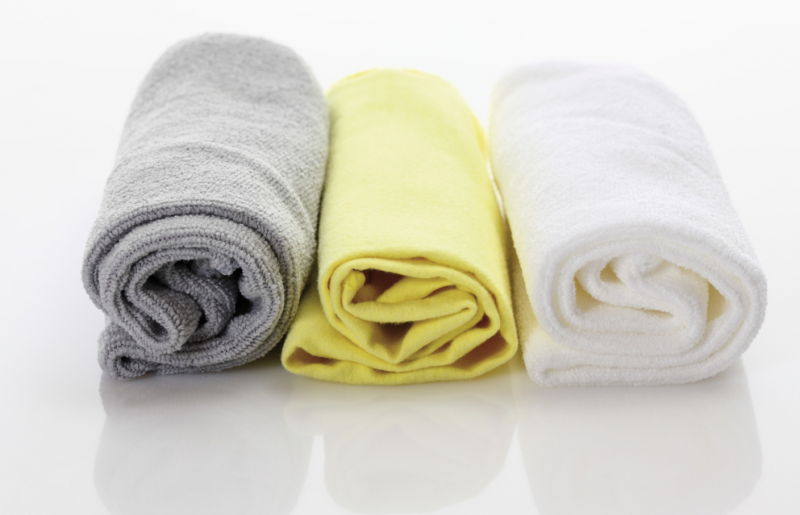
1. Dusting
Used both damp and dry, microfibre cloths make ideal dusters.

2. Electronics and glassware
Microfibre cloths are particularly good for cleaning electronics and glassware, including television and computer screens and tablets. As microfibre cloths don’t pick up debris, they will not leave scratch marks.
3. Stainless steel
With just water and vinegar and using the ‘S’ action, microfibre cloths are great for giving stainless steel a shiny finish.
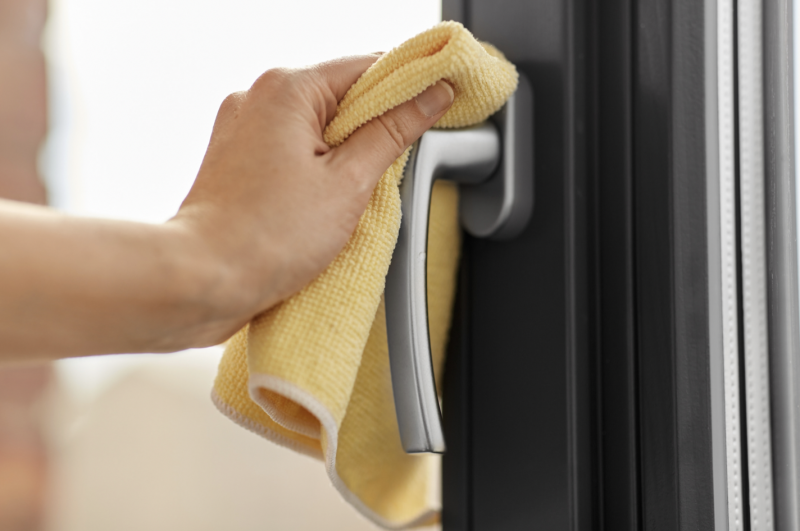
4. Chrome
When cleaning your chrome taps, use a microfibre cloth dipped in a solution of vinegar and water. This will remove any water marks, ground-in grime, and soap scum, leaving your taps beautifully shiny.
5. Eyewear
To clean glasses, rub them really well with a little rubbing alcohol on your microfibre cloth.
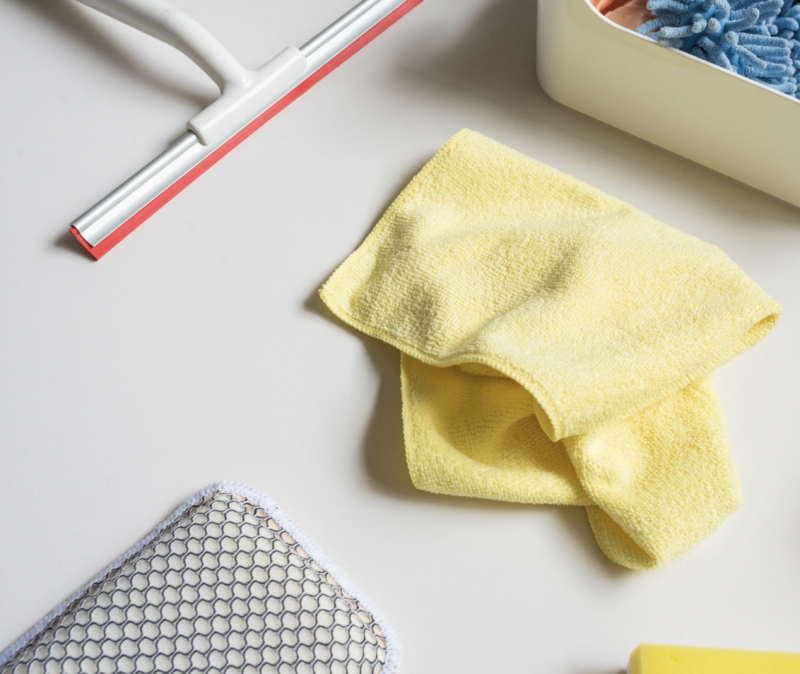
6. Grout and tiles
Grout can be very hard to keep clean and bright white. After scrubbing grout with a small hard brush or a toothbrush, use a microfibre cloth to wipe away any soapy suds and buff the grout and tiles clean and dry, leaving them super shiny.
7. Washing up
Another great tip is to use your microfibre cloths for the washing up. Microfibre cloths don’t cling onto bacteria, so they don’t end up smelling. When you’re finished, make sure to wring out as much water as possible and hang up to dry.
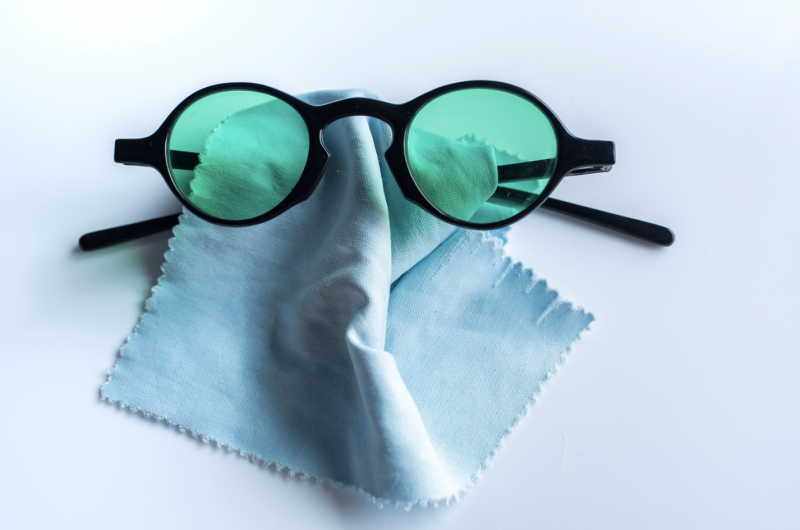
8. Drying dishes
Microfibre cloths soak up water really well so are also great for drying the dishes. Use a separate cloth for drying after you’ve finished washing up.
Top tips to keep your microfibre cloths working for you longer
- Colour-coding cloths
When cleaning your home, it’s important to clean away the germs, not spread them around. Please don’t use the same cloth for multiple household tasks. Imagine using the same cloth for the loo and the bath! Yuck! Try using a colour coding system for your microfibre cloths – this will stop cross-contamination of dirt and bacteria around the home.
Here’s my system:
PINK for the SINK
BLUE for the LOO
GREEN for CLEAN
YELLOW for DUSTING
I use pink cloths for cleaning sinks, draining areas and work surfaces in the kitchen. In the bathroom, I use pink to clean the bath, shower and sinks.
Blue is for the toilet and only the toilet.
Green is actually for cleaning glass: mirrors, picture frames, windows, TV screens and glass-topped furniture (Green for Clean just sounds better!).
I use yellow for general dusting: furniture, skirting boards and banisters.
You can of course create your own system – just make sure it works for you!
- Washing
Wash your microfibre cloths between uses.
You may also want to wash the cloths before using them for the first time to remove any stray fibres.
You can either wash cloths by hand or in a washing machine. If you opt to use the machine, try to wash them separately from any other laundry.
Make sure to dry cloths out before you leave them in a laundry bin, as wet cloths will encourage mildew and bacteria growth.
- Machine washing
Pop them in the washing machine at 60°C, with liquid detergent but no fabric conditioner and they will come out as good as new! I opt for liquid detergent over powder as powder can sometimes damage the delicate cloth fibres.
- Handwashing
Wash with warm soapy water, adding in some washing detergent or even washing-up liquid. Leave to soak for about 1 hour and occasionally stir around with a wooden spoon. Rinse under cold running water.
- Drying
One of the great things about microfibre cloths is how quickly they dry! All you need to do is hang them up to air dry. If you want to dry them in a tumble dryer, use a low heat as a high heat can damage and shrink microfibre cloths.
